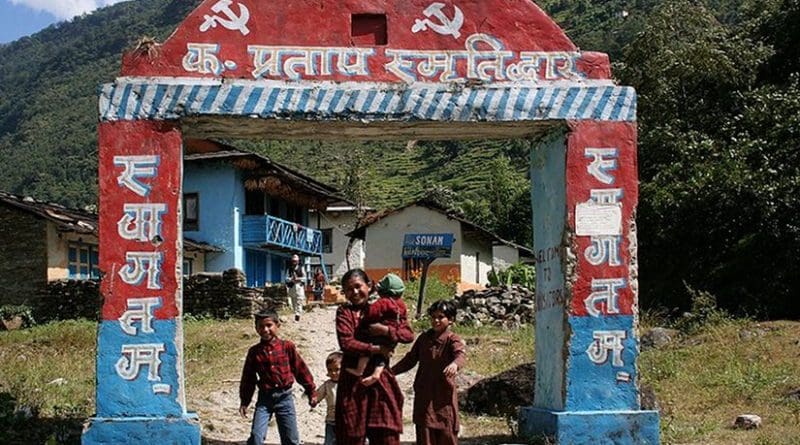Urban Maoism: Concerns And Cautions – Analysis
By IPCS
By Dr. Rajat Kumar Kujur*
On 10 September 2019, the residence of an Associate Professor at Delhi University, Dr Hany Babu MT, was raided by the Pune police for over six hours in connection with the Bhima Koregaon violence case. His laptop, cell phones, two booklets printed for the GN Saibaba defence committee, and two books (Yalavarthi Naveen Babu’s From Varna to Jati: Political Economy of Caste in Indian Social Formation,and N. Venugopal’s Understanding Maoists: Notes of a Participant Observer from Andhra Pradesh)were confiscated. Earlier in August 2018, the Pune police had conducted similar raids at the residence of Professor K Satyanarayana of the English and Foreign Languages University campus in Hyderabad. Ranchi-based rights activist Stan Swamy’s house too was raided on two separate occasions.
It all began on 6 June 2018, when activists Sudhir Dhavale, Rona Wilson, Surendra Gadling, Shoma Sen and Mahesh Raut were arrested on charges of inciting the Bhima Koregaon riots, in which one person was killed and several others were injured. All the activists were labelled as ‘Urban Naxalites’ and accused of being members of the banned Communist Party of India (Maoist) (CPI-Maoist). Since then, words like Urban Maoist and Urban Maoism are frequently referred in the contemporary debates on the Maoist Movement in India. In this context, it is pertinent to identify whether Indian urban centres are emerging as hotbeds of Maoism or is it just another politically convenient conspiracy theory? While the government labels this as a classic model of fourth generation warfare—a warfare where the enemy is invisible—there are others who view it as a naked bid to enfeeble democracy and warn other dissenters.
Though Maoism is predominantly looked upon as a rural phenomenon, it is an old Maoist strategy to focus on urban centers for leadership, and to organise masses, build a united front, and to engage in military tasks such as providing personnel, material and infrastructure. A 2004 CPI-Maoist document, titled Urban Perspective, elaborates on this strategy, and one of its most important focus areas pertain to gaining leadership from urban areas. The document argues that the CPI-Maoist’s focus should be on organising the working class, calling it the “the leadership of our revolution.” “It is the task of the party in the urban areas to mobilise and organise the proletariat in performing its crucial leadership role,” the document reads. It adds that the main focus of the Maoists’ urban work is to organise the masses, including the working class, students, middle class employees, intellectuals, women, dalits and religious minorities. It elaborates its need to create front organisations for extending the reach of the organisation. The document makes a critical observation that while the CPI-Maoist must focus on the organised sector, there is also a need to mobilise the unorganised segment as well.
In its 2007 document, titled Handbook on Strategy and Tactics of the Indian Revolution, the CPI-Maoist outlines the blueprint of their plan to overthrow the Indian state, first in the countryside where their enemy (i.e. the state) is weak, and then to gradually encircle and capture cities. This document emphasises on the recruitment and placement of Maoist sympathisers in key public and private sector industries. The document also states that the CPI-Maoist’s focus should be on infiltrating the “enemy camp” in critical departments like finance, military, police, power, IT, defense production and disrupt the activities from within by gaining control over the workers. This document clearly underlines that the outfit’s aim is to create groups of highly motivated individuals who constitute what the Maoists call “city action teams.”
Looking at the urban areas and masses were always a part of CPI-Maoist agenda and there is no surprise element in it. Mao himself stated that “the final objective of the revolution is the capture of the cities, the enemy’s main bases and this objective cannot be achieved without adequate work in the cities.”
Needless to say, it is necessary for the government of India to prevent Maoist forces from infecting urban India. However, simply branding a group of people as ‘Urban Maoists’ and putting them behind the bars can never be an effective strategy to deal with the spread of left wing extremism in urban localities. In fact, the government of India must realise that now the Maoist conflict has reached a stage where the government must involve the civil society in its counter strategies. Maoist presence in urban localities cannot be denied but the real challenge is to identify them. The word Urban Maoist may sound high profile but the CPI-Maoist cadres operating in urban localities maintain very low profile remaining almost invisible. The government cannot allow the situation to remain blind and hence it needs to follow a cautious approach in identifying the real issues typical with the urban India which the CPI-Maoist could exploit in garnering popular support.
The vast majority of unorganised working class and displaced persons in the urban areas seem to be most vulnerable, and the government must devise tactics to prevent them from falling into the CPI-Maoist trap. Additionally, any dilution of government policies on land acquisition, R&R and CSR could provide CPI-Maoist an opportunity to reach out to the masses. A successful government strategy on Urban Maoism must include the elements of acceptance, analysis and action. The government must accept that Maoism poses a big threat for the urban India. Such an acceptance must be followed by a deeper analysis of Maoist modus operandi in the urban areas and this only would allow the government to take proper action against the Maoist penetration into urban minds, persons and institutions.
*Dr Rajat Kumar Kujur teaches Political Science at Sambalpur University, Odisha. He may be reached at [email protected].

